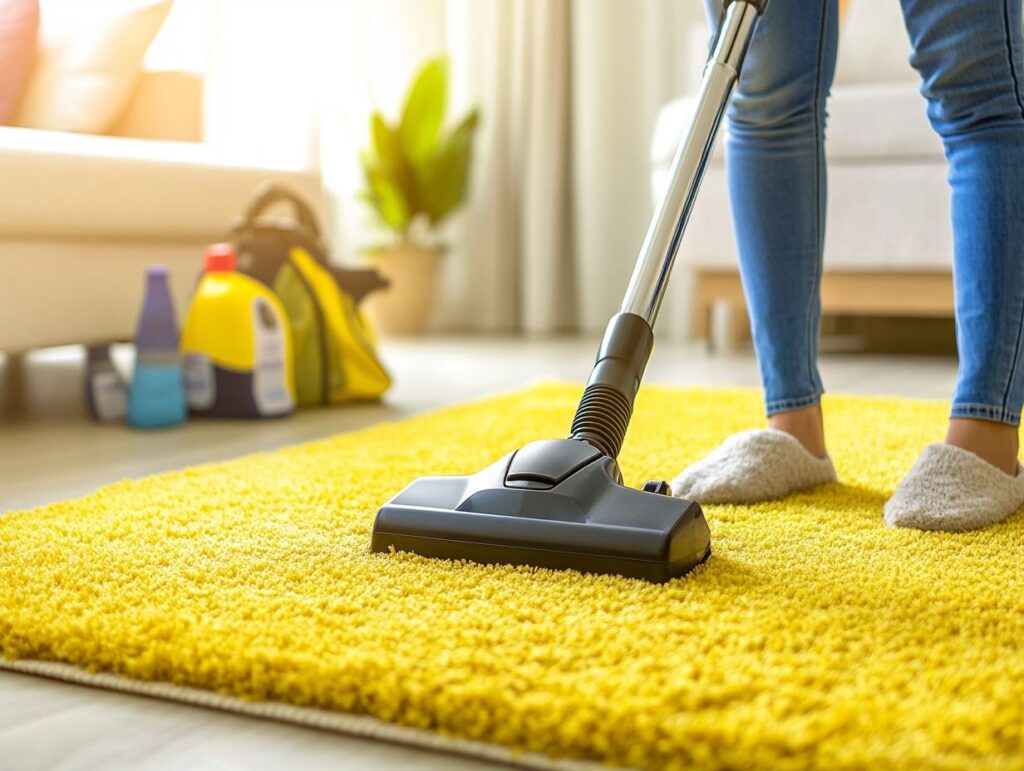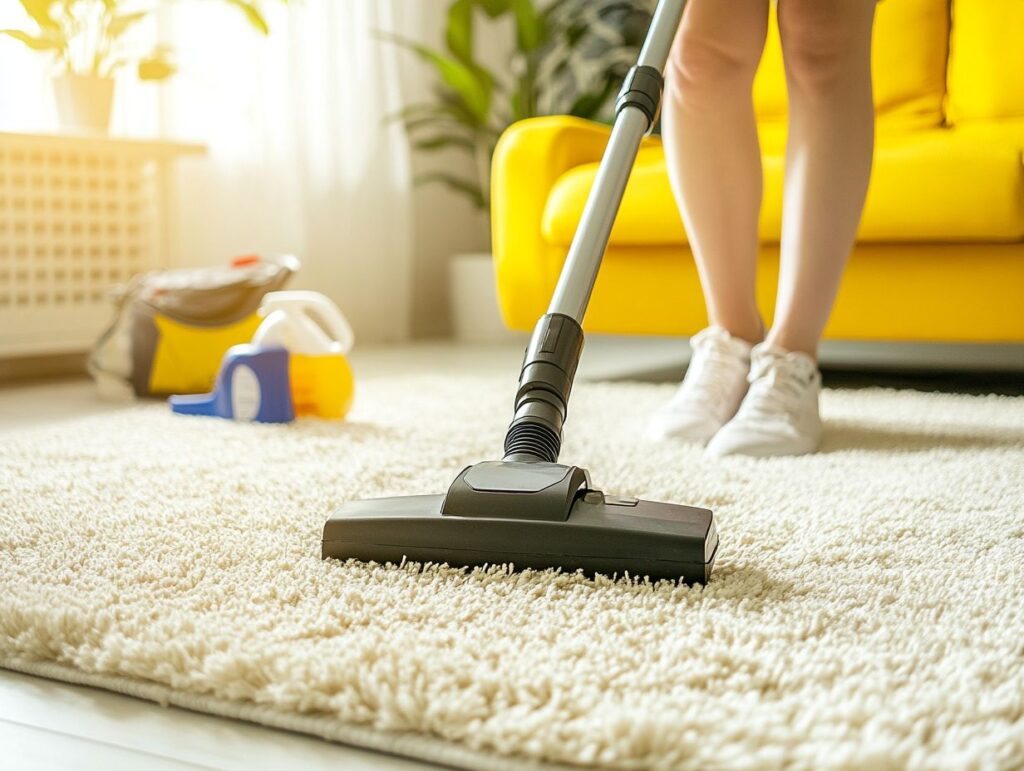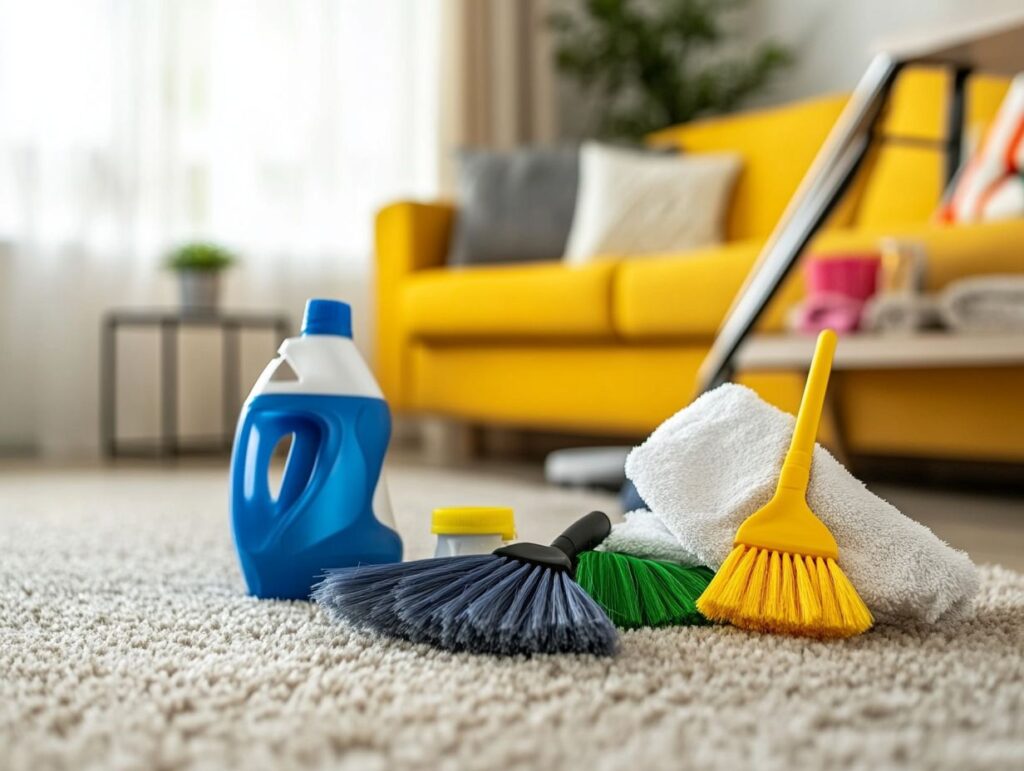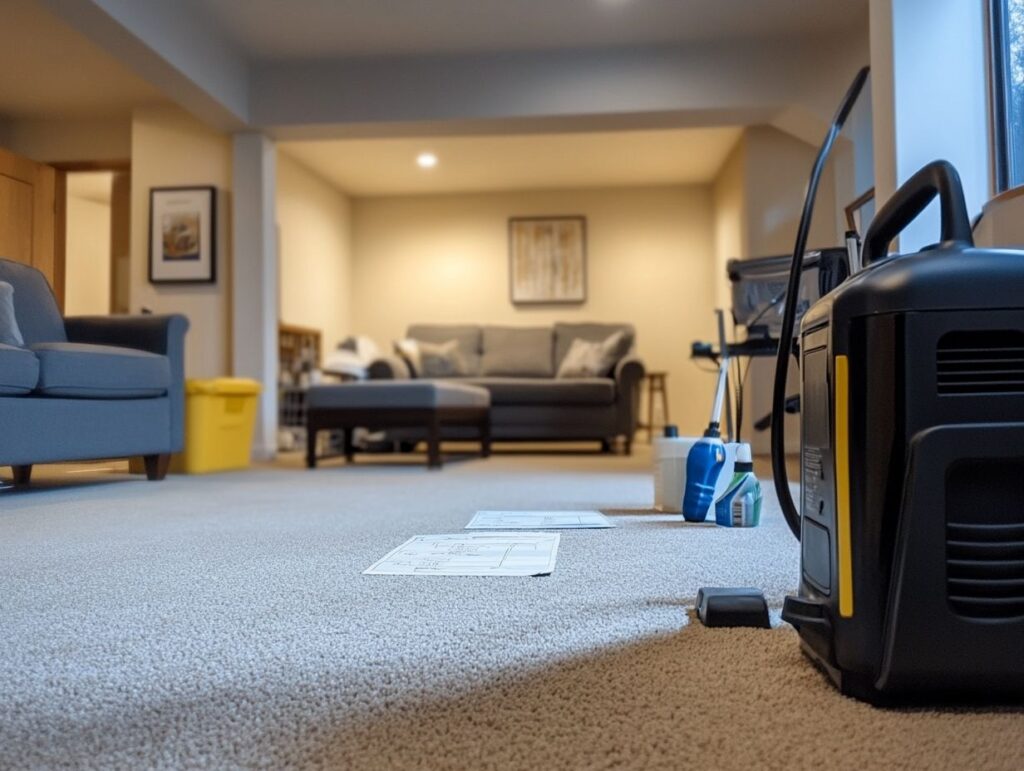Cleaning your fireplace is more than a seasonal chore; it is crucial for safety and aesthetics. A tidy fireplace reduces fire hazards and enhances the visual appeal of your home, especially when preparing for new tenants.
This guide covers the essential tools needed for the job, a step-by-step cleaning process, and tips for maintaining a pristine fireplace. Whether you’re a seasoned homeowner or new to the task, you’ll find insights to ensure a welcoming space.
Why Cleaning Your Fireplace is Important
Cleaning your fireplace isn’t just for looks; it’s a vital part of fire safety affecting your home. Maintaining it well helps prevent fire hazards, boosts heating efficiency, and improves indoor air quality.
Tackling seasonal cleaning, such as chimney sweeps and soot removal, ensures your fireplace runs smoothly and gives you the cosy warmth you crave during the colder months.
By routinely preparing your fireplace and conducting inspections, you create a safe environment for your family and guests and organise your home for new tenants, ensuring everyone enjoys comfort and satisfaction.
Benefits for Safety and Aesthetics
Cleaning your fireplace isn’t just about making it look nice; it’s essential for safety and enhancing the overall feel of your living space. Regular maintenance can help prevent hazardous situations, ensuring your home is attractive and safe for everyone, including new tenants. You can achieve the perfect balance between functionality and charm by adhering to good fireplace care practices and safety tips.
Keeping your fireplace in excellent condition preserves its integrity and makes your home more inviting. A well-maintained fireplace can transform a room, creating that cosy atmosphere that potential tenants desire. Moreover, using accessories like screens and tool sets enhances the appearance and adds extra safety measures.
Following a comprehensive cleaning checklist, ensuring every nook and cranny—from the chimney to the firebox—is covered, you’ll feel confident and content with your property. And that’s a win-win! Happy tenants are more likely to extend their tenancies and spread the word about your place, benefiting everyone involved.
Materials Needed for Cleaning
Before cleaning, gather all the materials you’ll need to do the job thoroughly and safely. Essential supplies like a scrubbing brush, ash vacuum, and protective gear are crucial for removing ash and soot from your fireplace.
Having the right tools makes cleaning easier and helps ensure your chimney and hearth cleaning goes smoothly and without hassle.
Essential Tools and Supplies
To clean your fireplace effectively, you’ll want to have the right tools and supplies on hand. These should include a reliable vacuum cleaner for ash removal, specialised fireplace tools for removing soot, and eco-friendly cleaners that ensure a clean burn without leaving harmful residues.
Hiring a professional chimney sweep can boost safety and efficiency, especially in deep cleaning, if you’re willing to pay for it.
Using a vacuum designed specifically for fireplaces helps tackle the fine particles that regular vacuums might miss. This way, you can ensure a thorough cleaning while keeping the dust in your living space minimal. Those specialised tools, often made from sturdy metal, are perfect for scraping and scrubbing those stubborn soot deposits and creosote, which can lead to dangerous chimney fires if you let them pile up.
Regarding firewood storage, having a well-organised system keeps your firewood dry and makes it easy to grab some logs for those cosy evenings. Prioritising these elements is critical to getting rental properties tenant-ready, as a well-maintained fireplace boosts safety and appeal.
Step-by-Step Guide to Cleaning Your Fireplace
Cleaning your fireplace might feel overwhelming, but don’t worry—you can tackle it professionally with a simple step-by-step guide. This DIY cleaning routine has a handy maintenance checklist that covers everything you need to do, from getting rid of ash and soot to inspecting the firebox, smoke chamber, and flue.
Sticking to the recommended cleaning frequency will keep your fireplace functioning well and ensure your home remains safe.
Preparation and Safety Measures
Before you clean your fireplace, put safety first to protect yourself and your home. Remember to grab the right protective gear—think gloves and a mask—to keep you safe from dust and soot while you work.
It’s a good idea to do a chimney cleaning inspection first, too. This way, you can tackle any major fire hazards and ensure your cleaning routine goes off without a hitch.
Staying on top of these safety protocols helps create a healthier environment and boosts the effectiveness of your home improvement projects, especially when you have tenants coming and going. A clean, well-maintained fireplace can enhance your home’s overall appeal, making it more inviting for potential tenants.
Following these steps can help you avoid fire hazards threatening your property and loved ones. Preparation is crucial to cleaning—it sets the stage for a safe and successful outcome.
Removing Ash and Debris
The first step in your fireplace cleaning routine is removing ash and debris, which helps your fireplace work better. An ash vacuum makes ash disposal safe and easy, while a good old scrubbing brush can tackle any soot stuck in the firebox.
By dealing with debris promptly, you’re setting your fireplace up for optimal operation and better indoor air quality.
Regular flue cleaning is essential to keep the airflow smooth and prevent the buildup of dangerous creosote, which can disrupt combustion and create fire hazards. While an ash vacuum is fantastic, don’t underestimate a sturdy dustpan and brush for scooping up those larger debris pieces.
Also, take a moment to check your chimney pot—it’s crucial for keeping out moisture and critters that can block airflow.
Incorporating these wood stove care practices into your routine will boost your fireplace’s efficiency and ensure long-term safety and performance. Consistent fireplace care keeps your heating system in excellent condition, making your home cosy.
Scrubbing and Wiping Down Surfaces
Once you’ve cleared the ash and debris, the next important step is to scrub and wipe down all surfaces, including the bricks and the inside of the firebox. Effective fireplace cleaning products and eco-friendly cleaners are critical for removing odours and preventing harmful residues from building up. Regular maintenance tips suggest that this cleaning should be part of your routine if you want your fireplace to look great and function properly.
It’s essential to pick the right tools, like gentle scrubbing brushes and microfibre cloths, and specific cleaners for different materials to get the best results. Paying attention to these details makes your fireplace accessories look fantastic and helps create a safer home environment.
Adding this task to your maintenance checklist ensures that every inch of your fireplace contributes to your overall home comfort, keeping you warm during the chilly months and maintaining a cosy ambience all year round. Plus, keeping those surfaces clean helps extend the life of your fireplace’s components, making it a crucial part of being a responsible homeowner.
Preparing for New Tenants
Getting your fireplace ready for new tenants is a vital part of managing your property that can enhance tenant satisfaction.
When preparing the fireplace, it’s important to have a thorough cleaning checklist to ensure all the maintenance tasks—such as chimney sweeping and soot removal—are completed before the new occupants move in.
A clean fireplace prepares the home for them and demonstrates that you care about their comfort and safety.
Final Touches and Tips for Presentation
Once you’ve finished cleaning, those final touches can enhance your fireplace’s appearance and boost your property’s overall presentation. Simple things like organising your fireplace accessories or adding some decorative elements can make the fireplace the star of the show in your rental. These little enhancements prepare your place for tenants and demonstrate your commitment to home improvement.
But it’s not just about appearance; ensuring the fireplace runs smoothly and efficiently is key to attracting tenants. Using eco-friendly cleaners to keep the area spotless shows you care about cleanliness and sustainability.
Regular inspections and prompt repairs highlight your attention to detail and show you’re serious about safety, which can lead to happier tenants. When potential renters see a well-maintained fireplace, they can easily picture themselves enjoying cosy evenings by the fire, making your property far more appealing and nudging them closer to signing that rental agreement.
Maintaining a Clean Fireplace
Keeping your fireplace clean requires a commitment to regular cleaning and maintenance tasks that help it last longer and work efficiently. It’s essential to determine how often to clean it based on how much you use it—whether it’s wood-burning, gas, or electric.
Incorporating routine inspections and cleaning into your home maintenance plan can significantly reduce fire hazards and enhance fire safety.
Regular Cleaning and Maintenance Tasks
Regular cleaning and maintenance are essential for keeping your fireplace safe and efficient. This means you should conduct routine inspections, dispose of ash promptly, and clean the flue to avoid creosote build-up.
These tasks aren’t just about keeping things tidy; they’re crucial for reducing fire hazards and ensuring your fireplace operates properly. Maintaining a clean fireplace can boost customer satisfaction if you’re a landlord, particularly during tenant turnover. Content tenants often lead to longer tenancy agreements.
You should also regularly check the fireplace and chimney for cracks or structural damage. This can help prevent dangerous situations, keep everyone safe, and extend the life of your heating system.
By adhering to these practices, you and your family can confidently enjoy your fireplace while minimising risks.




